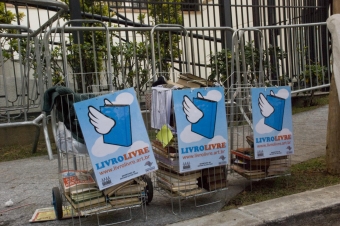Summary:
The activity focuses on the tax process through its practical application in simulated cases that approximate to the reality of the practice of private and public law. The learning is based on problems, and it is encouraged to the students the search for solutions from different sources, so that the student will understand the problem, also to contextualize the theory already studied, and search a solution and decide what is the appropriate way to go forward. For that, the students are placed in the role of lawyers and prosecutors of the department of the treasury, acting in the interests of the taxpayer and of the state.
Objective:
GENERAL GOAL:
The development of the judicial process of tax material, with the simulation of fictitious cases based on real documents and situations, then giving the student the possibility to act as taxpayer’s lawyer or prosecutor of the National Treasury.
Which information it is intended that the student acquires?
The knowledge of the following areas - Tax Process: Fiscal Execution, except for pre-execution, mandamus writ and several common actions. Tax Law: Extinguishing modalities of the tax credit, subscription validity requirements in outstanding debt and the corresponding certificate, certificates, suspension of the tax credit, improper payment. Civil process: Competence, deadlines, formalities of initial and other petitions, guardianship anticipation.
What is intended that the student should know how to make?
Reading enhancement of petitions, laws and legal documents; Writing petitions and legal texts; Interpretation of the Law course and the law; Capacity to argumentation and persuasion, with correct use of legal reasoning; Making decisions based on the legal knowledge, and practical application of the theoretical knowledge that was have gained at university.
What are the reflections which it is intended that the student gain?
The application of theoretical class knowledge in a practical activity that reflects the reality of work in the actuation area. It is intended to show the student the application of the content, the context in which it operates and how it can be used to solve real cases.
Dynamics:
1) What are the previous materials for the class? (Doctrine, legislation, jurisprudence, documents, etc.)
The cases and parts preparation to be used by the students. Study of the pieces by the students.
2) What are the materials used in class?
The activity is developed outside of the regular classroom, being held by students in a virtual environment. Only the beginning and end of the activity are discussed in class, without the development of the activity in these moments.
3) What is the method used during the exercise? (see glossary at the end of this sheet)
PBL - Problem Based Learning and Role Playing. These methods are used because it is placed to the students a "real" case (problem) and requires that they search the solution without prior exposure of the contents. The classes about the themes’ activity are later to their development, which has shown to significantly increase the use of content and lecture by the students. The role playing occurs because the students, initially, assume on the role of taxpayer lawyer. In the next stage, they assume the role of the prosecutors of the department of the treasury, leading them to different reasoning that each situation requires.
3) What are the questions or proposed discussions?
The placed question is the need to defend the taxpayer/customer within a specified time and using limited information. Also, the students are led to situations in which the party they represent is wrong, then they still need to defend their interests in the process.
4) What is the role played by the students in the dynamics?
Lawyers of the passive subject tax liabilities and prosecutors of the department of the treasury.
5) How long does it take to perform the dynamics?
1st phase: availability and response time to the first piece sent = 10 days. Contestation of the other party = 10 days and correction by the professor and sentence = 10 days. Total = 30 calendar days and may be held in more or less time, depending of the professor's criterion.
As the activity is not realized in the classroom, it can be developed in parallel with expositive classes or other activities.
What is the moment of the semester’s program that it is applied?
It is applied before the tax judicial process classes, generally at the beginning of the second school bimester.
Is there any care or any observation to be highlighted?
It is important that the activity and its goals are well placed to the students. Being the PBL, it is important to conduct the activity without theoretical exposition of the main subjects of the activity. The intention is that the students search to solve the problem without the help of the professor. The utilization is much better when the students discover their solutions by themselves.
Development
1 – The postage of the initial notice with the explanation and objectives of the activity.
2 – Groups formation (assign numbers to the groups)
3 – Cases’ draw to each group.
4 – Opening date for analysis of parts and the first manifestation of the postage
5 – Draw of which team will answer to each initial manifestation. It is good to remember that each team that began working on a fiscal execution procedure answers to an action of other nature and vice versa, giving opportunity to all teams to work with the fiscal execution and other actions.
6 - Deadline for second manifestation;
7 – Correction made by the professor, with an evaluation
8 – Disclosure of the work results with a written part from the professor in the classroom.
Time of application:
30 calendar days without the use of class time. It is possible to perform the activity in class, it also being possible to have more or less application time.






